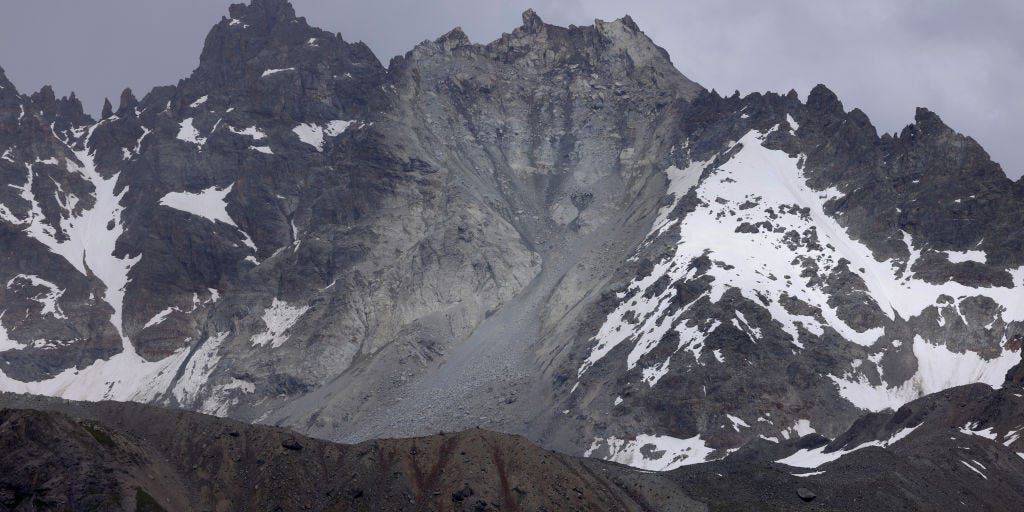Mt. Fluchthorn’s tallest peak, on the Swiss-Austrian border, collapsed in June.
Experts say peaks in the European Alps and Southern Alps of New Zealand are at risk of collapse, too.
The damage and dangers from mountain collapse disproportionately impact indigenous communities.
On June 11, the main peak of Mt. Fluchthorn, on the border of Austria and Switzerland, collapsed without warning.
Roughly 3.5 million cubic feet of earth tumbled down, filling the valley below with 40 Olympic swimming pools’ worth of rocks, mud, and dirt, LiveScience reported. While no people got hurt, a religious cross marking the summit was destroyed.
Fluchthorn had three peaks, and the main, southern one used to be the tallest. With the south peak collapsed, the middle peak is the new summit at 11,145 feet — the second-highest summit in the Silvretta Alps.
Overall, Mt. Fluchthorn is 60 feet shorter than it was earlier this year, per LiveScience.
Why did the peak collapse? Well, like many mountains in the far north, Fluchthorn had a lot of permafrost — a permanent layer of ice and dirt under the mountain’s surface.
“Permafrost is important because frozen water within the ground holds the ground surface together and prevents it from moving. But when that ice melts, the liquid water can flow away. The ground surface becomes less stable and can move, often very quickly,” said Jasper Knight, a geoscientist at the University of Witwatersrand in South Africa.
When a big chunk of mountain moves quickly, like with the mudslide at Fluchthorn, that’s called a mass movement.
“Global warming is causing the permafrost to melt, which is the trigger for these mass movement events to take place,” Knight said.



I hate it so much when articles end like this. 1) It’s something the journalist wants to believe, scientist would not start a sentence with “but I belive…” 2) yea but we don’t do anything like that, what we do is not enough and not fast enough, so no: the situation IS hopeless 😖
But when it is hopeless there is also no more incentive to do anything.
I guess that’s a choice. Most people would change the objective and at least aim for mitigation.
Instead of mitigating, we demand hope to cling to - hope for a mission that has no hope. This in turn drives inaction toward any objective, and hope becomes self-defeating: Hopium.
Worse yet, hope makes us easily manipulable. If we are led to believe a harmful action will help, in desperation we will follow the false hope and act against our own true interests. Any organization with an once of money or power knows this. Yet we cling like addicts.
We must give up the 1.5C pipe dream and recognize that we cannot have our cake and eat it too, we cannot have rampant industrialism and unfettered consumerism while also maintaining a livable ecosphere. Our choice right now is to have a livable ecosphere in 2075, or to not have a livable ecosphere. Neither of these choices are compatible with infinite growth economics. Yet the hope lives on and continues its fight for extinction.
Style guides often tell journalists to avoid saying what someone “believes”, as you can’t know what’s inside someone else’s mind. We can only know what they say.
ApparentlyProbably ChatGPT often ignores what style guides often tell journalists, it’s just a bad article 😒